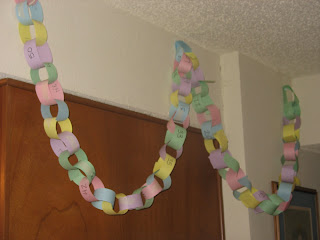I didn't understand how base ten worked until I got to college and took a class called "Teaching Elementary Math." I had this great aha moment and finally understood why we're supposed to carry the one. Until then, most problem solving for me had been simply going through the motions. I didn't "get it."
For those of you who may still be in the same boat, base ten just means that we as humans group things into ten. Think about how we count. 1..2..3..4..5..6..7..8..9..what's next? We add another place value and say 10. 1group of ten and 0 ones. Then we have 1 group of ten and 1 one (11). Then 1 group of ten and 2 ones (12). This system works on for infinity. Every time we get a group of ten, we bundle it together and put it in the next place value. 10 tens makes one hundred. 10 hundreds makes 1 thousand. And so on...
Why base ten and not base 5 or 6 or 20? Before there was written language, people used their hands to represent numeric value. Count your fingers and you've got your answer. I guess it got to hard to bargain for 500 hundred sheep with just the hands so they figured out how to write things down :)
To prepare your child for this, give them lots of experience with numbers. Base ten is a hard concept. Don't try to make you 3 year old an expert. The most exposure they have to how numbers work, however, will give them a great foundation to build upon.
*Read lots of number and counting books.
*Count items around the house. How many people are in our family? How many birds to you see? How many toes do you have?
*Build walls/roads/towers with blocks, ten blocks each. Count then individually, then count by tens.
*Get an old egg carton. Label the inside of the egg holders 1-12. Give your child beans or something similar and see if they can fill each egg holder with the right number of beans.
*Write numerals with a marker on a hard paper. Have them glue beans, sand, or salt onto the lines.
*Have your child use pipe cleaners (chenille wires) to create different numbers.
*Let your child make a number book. Staple ten pieces of paper together. On each page, write a number. Your child can glue magazine images, draw pictures, or glue precut shapes onto each page to match the number. If you want it last awhile, use contact paper to laminate the pages (or head to Mardel's).
*Go on a number hunt. Find one of something in your house, then two, then three...
*Get some goldfish and have your child count them. How many fish do they have in their ocean? Tell a story about a big shark (Mom) wanted to gobble up the fish. Oh no! The shark came and ate a fish! How many are left? Then another big shark named (fill in child's name) came and ate one too! Now how many are left?Use your imagination and be silly!
Below is an activity Maggie and I did today to count down the days until we leave for Ireland. We made a chain out of paper, but before we taped it together, she watched me write down the numbers on each piece. There were 53 links, and as I wrote each number, I said it out loud, emphasized the pattern. I could tell she caught on in the teens because she said "fourteen, fiveteen, sixteen." In the twenties and thirties, I showed her how each number in the ones place grew by one, but the number in the tens place stayed the same. Exposure, exposure, exposure. Every night, she'll get to tear one off, which will also let her practice counting backwards!



No comments:
Post a Comment